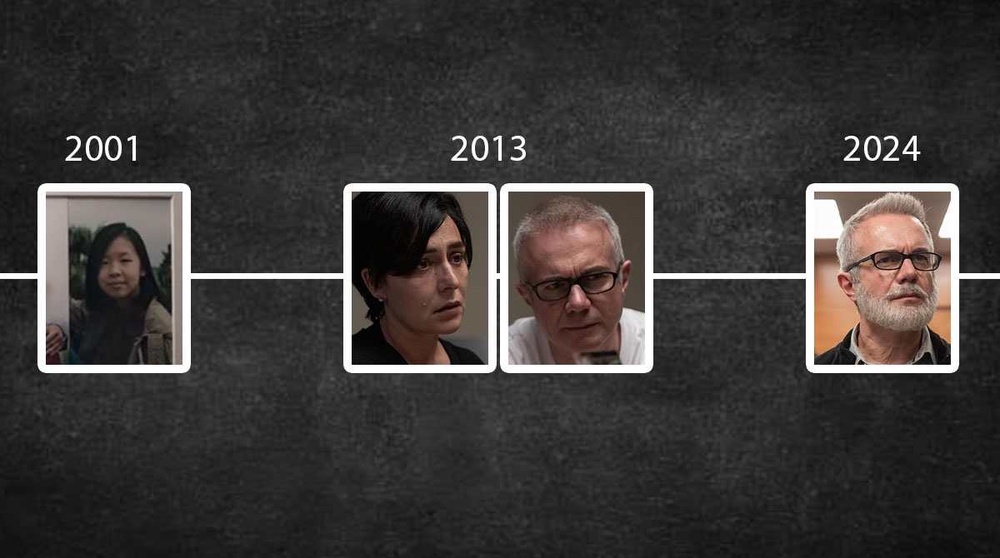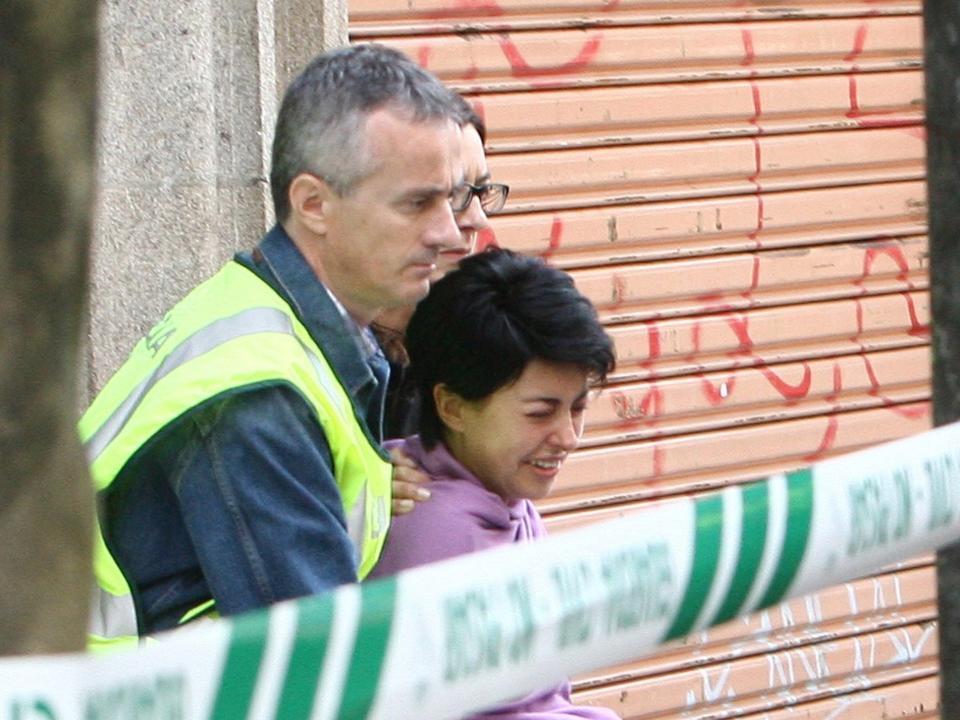Let’s dive straight into one of Spain’s most shocking crimes that left the world questioning humanity itself. The Asunta case shook Galicia to its core and became a global headline. Why was Asunta killed? It’s a question that haunted investigators, journalists, and millions of readers around the world. Today, we’ll unravel the layers of this chilling story, exploring the motives, evidence, and unanswered questions surrounding her tragic death.
This isn’t just another crime story—it’s a deep dive into the darkness of human behavior, a reminder of how fragile trust can be, and an exploration of justice in action. Asunta’s case became more than just a murder investigation; it became a symbol of the need for accountability and transparency within families and communities.
Before we go further, let’s set the stage. Asunta was only 12 years old when she was found dead, and her death wasn’t just random—it was personal. What led to her brutal end? Was it greed, jealousy, or something even darker? Let’s explore this together as we piece together the puzzle of her tragic fate.
Read also:What Is Icl A Comprehensive Guide To Understanding Icl Definition And Its Impact
Who Was Asunta Fontanez? A Quick Background
Asunta Fontanez wasn’t just another child; she was adopted by a prominent couple in Galicia, Spain. Her life was filled with promise until it was tragically cut short. To truly understand why she was killed, we need to know who she was.
Biography of Asunta Fontanez
Here’s a quick look at her life before everything changed:
| Full Name | Asunta Fontanez Blanco |
|---|---|
| Date of Birth | January 15, 2002 |
| Place of Birth | China |
| Adopted By | Rosario Porto and Alfonso Basterra |
| Date of Death | September 27, 2014 |
Asunta’s life was cut short at the tender age of 12, leaving behind a legacy of unanswered questions and a community in shock. Let’s now take a closer look at her family dynamics, which played a crucial role in this tragedy.
Family Dynamics: The Role of Adoption
Adoption is often seen as a beautiful journey, but in Asunta’s case, it turned into a nightmare. Her adoptive parents, Rosario Porto and Alfonso Basterra, were pillars of the community, respected and admired by many. But beneath the surface, tensions were brewing.
Asunta’s adoption was supposed to be a new chapter for the family, but it seems like it only added fuel to the fire. There were reports of neglect and favoritism toward their biological daughter, Laura. These dynamics might have contributed to the events that unfolded.
Adoption Challenges and Their Impact
Adoptive families face unique challenges, and the Portos were no exception. Here are some factors that might have influenced the situation:
Read also:Spotlight On Juilliard School Notable Alumni Who Shaped The World
- Cultural Differences: Asunta came from China, and integrating her into a Spanish household wasn’t easy.
- Parental Expectations: High expectations from adoptive parents can sometimes lead to resentment.
- Sibling Rivalry: The biological daughter, Laura, reportedly felt overshadowed by Asunta.
These challenges, combined with other factors, created a toxic environment that ultimately led to tragedy. But was this the only reason behind her murder?
Why Was Asunta Killed? The Investigation Begins
When Asunta’s body was found on September 27, 2014, near a river in Galicia, the nation was horrified. The investigation quickly revealed that her death wasn’t accidental—it was a carefully planned murder. But why?
Initial Theories and Suspects
Right from the start, investigators had their eyes on Asunta’s immediate family. Here’s why:
- Rosario Porto: Asunta’s adoptive mother was the first suspect due to her erratic behavior during questioning.
- Alfonso Basterra: Asunta’s adoptive father was also under scrutiny, given his close ties to Rosario.
- Laura Porto: The biological daughter, who reportedly had a strained relationship with Asunta, was also considered a suspect.
As the investigation unfolded, more evidence pointed toward a darker truth—one that would shock the nation.
The Crime Scene: What Really Happened?
The crime scene revealed chilling details about Asunta’s final moments. She was found with ligature marks on her neck, indicating strangulation. But there was more—her body had been placed in a position that suggested a staged suicide.
Forensic experts worked tirelessly to piece together the events leading up to her death. Bloodstains, DNA evidence, and other clues painted a picture of premeditated murder. But who could have done such a thing?
Key Evidence in the Case
Here are some of the key pieces of evidence that helped investigators crack the case:
- Text Messages: Exchanges between Rosario and Alfonso revealed suspicious conversations about Asunta’s future.
- Financial Records: Investigators found evidence of large sums of money being transferred shortly before Asunta’s death.
- Witness Testimonies: Neighbors and acquaintances reported hearing arguments involving Asunta’s name.
Every clue pointed toward a motive rooted in greed and control. But was that the only reason?
The Motive: Was It All About Money?
Money often plays a central role in murder cases, and Asunta’s was no exception. Her adoptive parents stood to gain significantly from her death. Here’s how:
Asunta’s inheritance was substantial, and her adoptive parents were listed as beneficiaries. Investigators believed that Rosario and Alfonso saw her as an obstacle to their financial freedom. By eliminating her, they could secure the inheritance and live comfortably without interference.
Other Possible Motives
While money was a strong motive, there might have been other factors at play:
- Jealousy: Laura’s resentment toward Asunta could have fueled the plot.
- Control: The Portos might have seen Asunta as a threat to their family’s reputation.
- Personal Issues: Mental health problems or past traumas could have influenced their actions.
These motives, combined with financial gain, painted a disturbing picture of a family torn apart by greed and hatred.
The Trial: Justice for Asunta
Rosario Porto and Alfonso Basterra were eventually charged with Asunta’s murder. The trial was a media sensation, with millions of people following every twist and turn. The prosecution presented a compelling case, supported by overwhelming evidence.
In 2016, both Rosario and Alfonso were found guilty and sentenced to 25 years in prison. Their biological daughter, Laura, was acquitted due to lack of evidence. The verdict brought some closure to Asunta’s story, but many questions still lingered.
Key Moments in the Trial
Here are some of the most significant moments from the trial:
- Opening Statements: The prosecution laid out a detailed timeline of events leading to Asunta’s death.
- Defense Arguments: The defense team tried to cast doubt on the evidence, but their arguments fell flat.
- Verdict Delivery: When the judge announced the guilty verdict, the courtroom erupted in emotion.
While justice was served, Asunta’s memory continues to haunt those who knew her best.
Asunta’s Legacy: Lessons Learned
Asunta’s case is more than just a murder story—it’s a lesson in accountability, transparency, and the importance of protecting vulnerable children. Adoption agencies, governments, and communities must work together to ensure that every child has a safe and loving home.
Her story also highlights the dangers of unchecked greed and the importance of mental health awareness. Families need support and resources to navigate the challenges of adoption and parenthood.
What Can We Do?
Here are some actionable steps we can take to honor Asunta’s memory:
- Advocate for Adoption Reforms: Push for stricter regulations and better support systems for adoptive families.
- Promote Mental Health Awareness: Encourage open conversations about mental health and its impact on family dynamics.
- Support Vulnerable Children: Volunteer or donate to organizations that help children in need.
Asunta’s legacy lives on through the changes she inspired, and it’s up to us to continue her fight for justice and equality.
Conclusion: Remembering Asunta
Asunta Fontanez’s life was tragically cut short, but her story continues to resonate with people around the world. The question of why she was killed remains a haunting reminder of the darkness that can exist within families. Through her case, we’ve learned valuable lessons about accountability, transparency, and the importance of protecting vulnerable children.
As we reflect on Asunta’s life and death, let’s take action to ensure that no child suffers the same fate. Share this article, start conversations, and support organizations working to make a difference. Together, we can honor Asunta’s memory and create a safer world for all children.
Table of Contents
- Asunta Case: Why Was She Killed?
- Who Was Asunta Fontanez?
- Biography of Asunta Fontanez
- Family Dynamics: The Role of Adoption
- Adoption Challenges and Their Impact
- Why Was Asunta Killed?
- Initial Theories and Suspects
- The Crime Scene: What Really Happened?
- Key Evidence in the Case
- The Motive: Was It All About Money?
- Other Possible Motives
- The Trial: Justice for Asunta
- Key Moments in the Trial
- Asunta’s Legacy: Lessons Learned
- What Can We Do?
- Conclusion: Remembering Asunta


